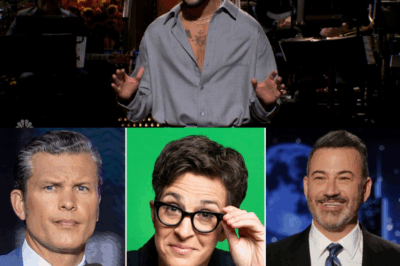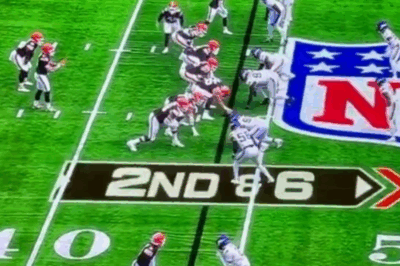Kendrick Lamar’s Super Bowl Halftime Show Sparks Debate Over Racism Allegations
Kendrick Lamar’s Super Bowl LIX halftime performance has ignited a heated debate, with some viewers accusing the rapper of racism. The controversy stems from the show’s strong themes of Black identity and culture, which critics claim were divisive and exclusionary. This reaction has sparked discussions on whether the performance was a celebration of cultural heritage or a political statement that alienated certain audiences.
The Allegations Against Kendrick Lamar

Following the halftime show, right-wing commentators and some conservative viewers took to social media to express their discontent. One of the most vocal critics was commentator Eric Daugherty, who described Lamar’s performance as a display of “Black nationalism.” Others argued that the visuals and choreography sent an implicit political message that made some viewers uncomfortable.
Critics pointed to specific elements of the show, including Samuel L. Jackson’s portrayal of an oppressive Uncle Sam, Serena Williams performing the Crip Walk dance, and a formation resembling the American flag. These moments, according to detractors, were intended to highlight racial struggles in America but instead came across as politically charged and racially divisive.
Supporters Defend Lamar’s Performance
Despite the backlash, many supporters argue that Lamar’s performance was a powerful tribute to Black culture, history, and resilience. Fans and cultural analysts claim that the accusations of racism stem from a misunderstanding of the performance’s intent.
Defenders of Lamar’s halftime show emphasize that music and art have long been used as tools for social commentary. By incorporating historical and cultural symbols, Lamar aimed to provoke thought and highlight important social issues rather than incite division.

A History of Political Super Bowl Performances
The Super Bowl halftime show has frequently served as a platform for artists to make political and social statements. From Beyoncé’s 2016 performance featuring Black Panther Party imagery to Shakira and Jennifer Lopez’s 2020 show highlighting Latin American culture, the NFL has seen its fair share of performances sparking debate.
In 2022, Dr. Dre, Snoop Dogg, Eminem, Mary J. Blige, and Lamar himself delivered a show celebrating hip-hop’s influence while subtly addressing racial and social issues. Lamar’s most recent halftime performance appears to follow this tradition, using visual storytelling to comment on the Black American experience.
The Role of Art in Social Commentary
Art, especially in music, often serves as a reflection of society. Hip-hop, a genre deeply rooted in storytelling, has historically addressed topics like systemic oppression, racial inequality, and cultural pride. Lamar, known for his politically charged lyrics and storytelling, has consistently used his platform to discuss social justice issues.
Supporters argue that his Super Bowl performance was no different. By showcasing Black history and culture on one of the world’s biggest stages, Lamar continued his tradition of using music to challenge narratives and spark conversations.
Public Reaction and Media Coverage
The controversy has been widely covered by mainstream media, with outlets analyzing both the accusations against Lamar and the defense mounted by his supporters. Social media platforms have also been flooded with reactions, with many posts debating whether the criticism is rooted in legitimate concerns or racial bias.
Some argue that the backlash itself is an example of a double standard in the entertainment industry. They claim that when predominantly white artists make cultural or political statements, they receive less scrutiny than Black artists addressing similar topics. This argument further fuels the ongoing conversation about race, media representation, and freedom of expression in entertainment.
The NFL’s Response
As of now, the NFL has not issued an official statement regarding the controversy. However, given the league’s history of both embracing and facing backlash for politically charged performances, it is unlikely that Lamar’s show was not vetted beforehand. The NFL has taken steps in recent years to be more inclusive, particularly in response to the racial justice movements that gained momentum in 2020.
Conclusion: Art or Controversy?
The debate surrounding Kendrick Lamar’s Super Bowl halftime performance underscores the complexity of interpreting artistic expression. While some see the show as a celebration of culture and a necessary commentary on social issues, others feel it crossed a line into political territory that alienated certain audiences.
This controversy highlights the broader conversation about the role of race in entertainment, the power of music as a tool for change, and the fine line between artistic expression and political messaging. Whether one views Lamar’s performance as powerful or polarizing, one thing is clear: it has sparked a necessary discussion about race, culture, and representation on one of the biggest entertainment stages in the world.
News
How did one North Carolina fan become the biggest story of the Clemson game without even stepping on the court? The answer will drop your jaw.
Social Media Has Fallen In Love With Jaw-Dropping North Carolina Fan Who Stole The Show In The Stands During Loss…
VIDEO: Dillon Gabriel’s first move as Browns’ starter? A chilling, direct shot at Shedeur Sanders that has the entire NFL fanbase gasping.
VIDEO: Dillon Gabriel’s first move as Browns’ starter? A chilling, direct shot at Shedeur Sanders that has the entire NFL…
J.K. Rowling’s explosive comments spark a TOTAL OLYMPIC MELTDOWN! Ticket sales are in freefall, and the 2028 Games are on the brink of collapse. You won’t believe the chaos.
J.K. Rowling’s explosive comments spark a TOTAL OLYMPIC MELTDOWN! Ticket sales are in freefall, and the 2028 Games are on…
Bad Bunny fires a shocking warning shot to Super Bowl viewers who don’t understand him, mocking the “right-wing backlash” to his historic halftime show.
Bad Bunny fires a shocking warning shot to Super Bowl viewers who don’t understand him, mocking the “right-wing backlash” to…
BREAKING: Erika Kirk breaks her silence with a shocking message to the “fans” questioning her grief. You don’t know the whole story. The timeline you’re demanding doesn’t exist.
BREAKING: Erika Kirk breaks her silence with a shocking message to the “fans” questioning her grief. You don’t know the…
The NFL just made a massive mistake on live TV. The “script” for the Browns-Vikings game was accidentally revealed, and fans are losing their minds. You have to see the video.
The NFL just made a massive mistake on live TV. The “script” for the Browns-Vikings game was accidentally revealed, and…
End of content
No more pages to load












